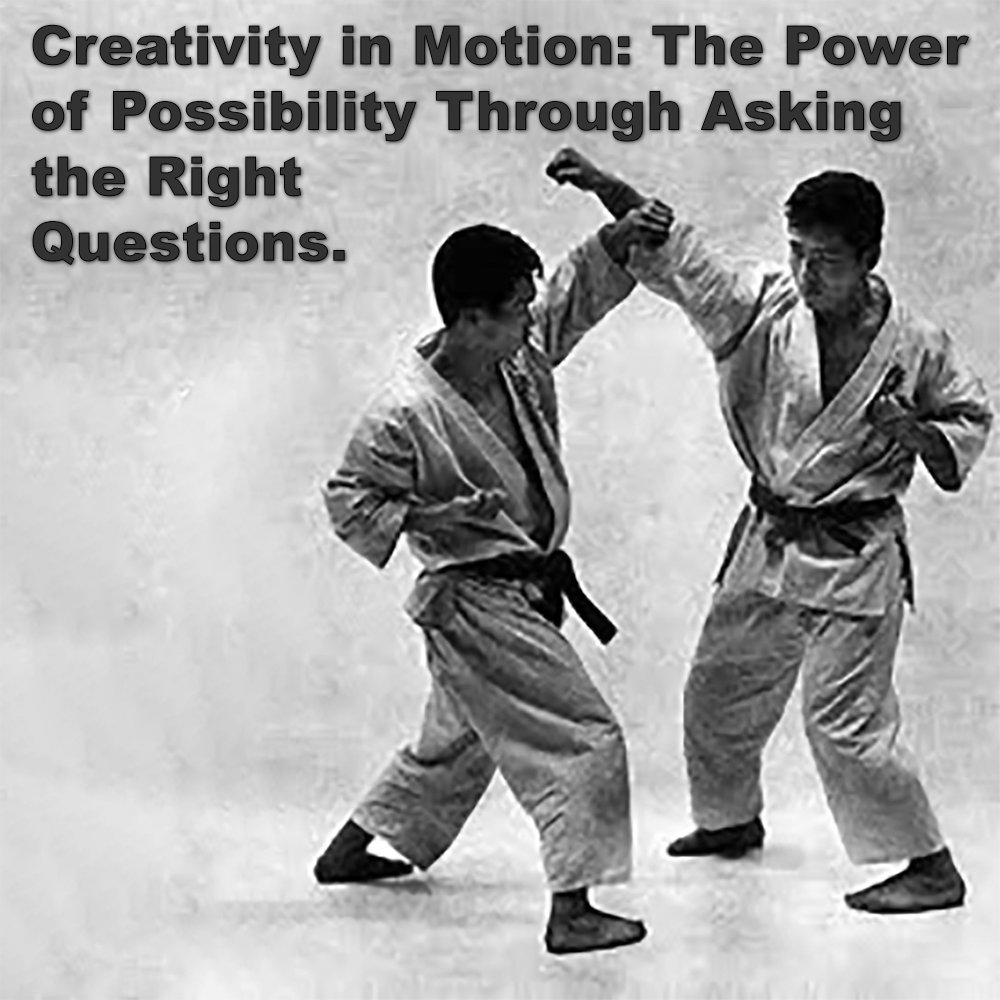
Creativity in Motion: The Power of Possibility Through Asking the Right Questions.
Posted by ADAM CARTER on NOV 10, 2024

Creativity in Motion: The Power of Possibility Through Asking the Right Questions.
(Approx 2 minute 35 second read)
The problem with many karate techniques is that they are often taught as having a single, fixed use. Consider modern karate and the tools it provides. Let’s take an example: the “Jodan age uke”, the ubiquitous upper rising block. In modern karate, it’s typically used to block, deflect, or push away a punch or strike aimed at the head.
Within this framework, the technique serves a single, specific purpose. It’s used against an upper attack – hence the name.
This single-use approach often dominates modern terminology, and we see it reinforced in traditional practices like step-kumite, and application to kata. But is this the full potential of this technique and techniques like it?
Having taught for many years, both in the martial arts and in my career, I’ve always tried to engage students by introducing “what if” scenarios. These scenarios are more than mental exercises; they’re a way to spark curiosity, encourage exploration, and challenge preconceived notions.
Engagement is at the heart of learning. Whether it’s listening quietly, answering questions, role-playing scenarios, collaborating with others, or applying ideas to real-life situations, the goal is the same: to ensure that students actively participate in their learning.
In karate, this means questioning not just what a technique is called, but what it can do. The language of “what if” invites you to see techniques differently. For example, what if the Jodan age uke isn’t just a block? Could it be used as a strike to the opponent’s chin or neck? What if it’s a setup for controlling an opponent’s arm or breaking their balance?
These questions shift the focus from rigid definitions to creative possibilities. They encourage students to experiment and find practical applications for techniques, especially in self-defense situations where adaptability and quick thinking are critical.
Of course, “what if” is just the beginning. The next step is to ask, “How might we…?” This follow-up question is deliberate, moving the student from exploration to action. How might we use Jodan age uke against a grab to clothing? How might we apply it in other close-range scenarios? How might we transition from this movement into a throw or a joint lock?
These questions help bridge the gap between theory and practice. They invite students to test their ideas and refine their understanding, ensuring that their discoveries are grounded in functionality.
This approach does more than broaden technical knowledge; it fosters a mindset of critical thinking. Instead of passively mimicking movements, students become active participants in their own learning. They begin to see the application of movement not as a series of static techniques but as a repository of principles waiting to be explored and adapted.
For instructors, this method transforms the dojo into a laboratory of ideas. By encouraging students to ask questions, instructors can guide them toward a deeper understanding. The process also builds confidence, as students learn to trust their ability to analyze and adapt techniques to suit real-world challenges.
But all this thinking must eventually transform into action. Exploring “what if” scenarios and crafting “how might we” solutions is only meaningful if it leads to practice. The real value comes when students take these questions to the mat, test their ideas, and refine their techniques through hands-on experience.
In doing so, they move beyond the surface of karate’s traditions and named techniques, engaging with its core purpose: practical application. This approach nurtures creativity, and adaptability, – qualities that resonate far beyond the dojo.
In the end, karate is not just about mastering techniques – it’s about mastering ourselves. By asking “what if” and “how might we,” we begin to unlock the true potential of karate – to protect and adapt.
Written by Adam Carter – Shuri Dojo.
